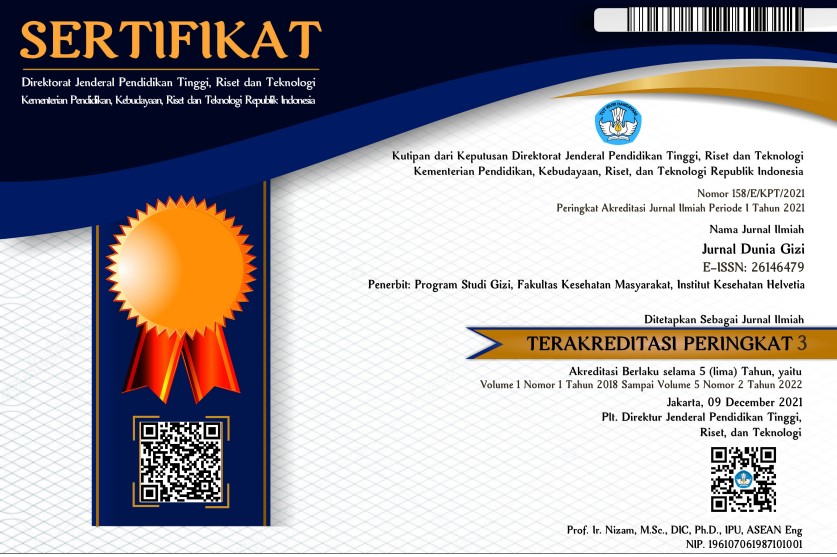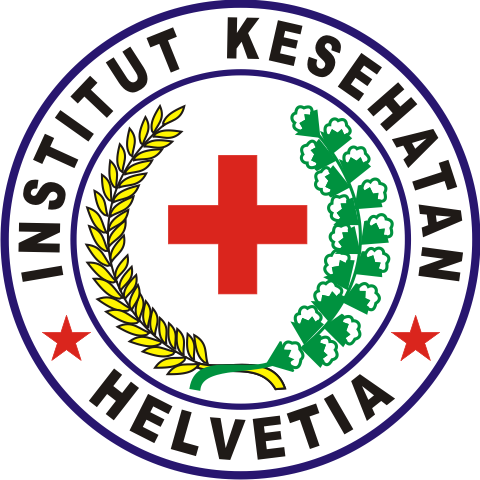Peningkatan Isoflavon dalam Produk Berbasis Okara yang Difermentasi oleh Jamur
Abstract
Isoflavon merupakan kelompok senyawa polifenol yang terkandung dalam kedelai yang diketahui memiliki efek menguntungkan bagi kesehatan dengan bertindak sebagai antioksidan, dapat mencegah kanker, osteoporosis dan penyakit kardiovaskular. Selama proses pembuatan tahu dan susu kedelai, sebagian besar kedelai terbuang dalam bentuk okara sebagai limbah. Okara diproduksi dalam volume yang besar di Indonesia. Okara, yang diangap sebagai limbah, belum dimanfaatkan secara optimal walaupun memiliki komposisi gizi yang signifikan. Meskipun dikonsumsi oleh sebagian penduduk Indonesia, penelitian tentang kandungan isoflavon dalam okara tempe atau oncom masih langka. Fermentasi substrat padat (Solid State Fermentation, SSF) dari okara oleh tiga kapang/ jamur berbeda yaitu P. ostreatus selama 10 hari (PO D-10), R. oligosporus atau N. sitophila selama tiga hari ditetapkan sebagai RO D-3 dan NS D-3, secara berturut-turut, dilakukan dalam penelitian ini. Secara umum, SSF menyebabkan peningkatan konsentrasi konjugasi aglikon isoflavon (daidzein, glicytein, dan genistein) pada okara. Uji DPPH (2,2-diphenyl-1-picrylhydrazyl) telah dilakukan dan sampel yang difermentasi relatif memiliki kapasitas antioksidan yang lebih tinggi dibandingkan kontrol. Kandungan protein (% basis kering) dari kontrol, PO D-10, RO D-3 dan NS D-3 secara berturut-turut adalah 34,8 ± 0,24, 38,3 ± 0,30, 40,4 ± 0,19, dan 39,7 ± 0,13 g/ 100 g.
Keywords
Full Text:
PDFReferences
Zaheer K, Humayoun Akhtar M. An updated review of dietary isoflavones: Nutrition, processing, bioavailability and impacts on human health. Crit Rev Food Sci Nutr. 2017;57(6):1280–93.
Vitale DC, Piazza C, Melilli B, Drago F, Salomone S. Isoflavones: estrogenic activity, biological effect and bioavailability. Eur J Drug Metab Pharmacokinet. 2013;38(1):15–25.
Faisal M, Gani A, Mulana F DH. Treatment and Utilization of Industrial Tofu Waste in Indonesia. Asian J Chem. 2016;28(3):501–7.
Li S, Zhu D, Li K, Yang Y, Lei Z, Zhang Z. Soybean Curd Residue: Composition, Utilization, and Related Limiting Factors. ISRN Ind Eng [Internet]. 2013;2013:1–8. Available from: https://www.hindawi.com/archive/2013/423590/
Puechkamut Y, Panyathitipong W. Characteristics of proteins from fresh and dried residues of soy milk production. Kasetsart J - Nat Sci. 2012;46(5):804–11.
Li B, Lu F, Nan H, Liu Y. Isolation and structural characterisation of okara polysaccharides. Molecules. 2012;17(1):753–61.
Li S, Wang L, Song C, Hu X, Sun H, Yang Y, et al. Utilization of soybean curd residue for polysaccharides by Wolfiporia extensa (Peck) Ginns and the antioxidant activities in vitro. J Taiwan Inst Chem Eng [Internet]. 2014;45(1):6–11. Available from: http://dx.doi.org/10.1016/j.jtice.2013.05.019
Shi M, Yang Y, Li Y, Wang Y, Zhang Z. Optimum Condition of Ecologic Feed Fermentation by Pleurotus ostreatus Using Soybean Curd Residue as Raw Materials. Int J Biol [Internet]. 2011;3(4):2–12. Available from: http://www.ccsenet.org/journal/index.php/ijb/article/view/11058
Queiroz Santos VA, Nascimento CG, Schimidt CAP, Mantovani D, Dekker RFH, da Cunha MAA. Solid-state fermentation of soybean okara: Isoflavones biotransformation, antioxidant activity and enhancement of nutritional quality. Lwt [Internet]. 2018;92:509–15. Available from: https://doi.org/10.1016/j.lwt.2018.02.067
Hwan Nam D, Jung Kim H, Sun Lim J, Heon Kim K, Park CS, Hwan Kim J, et al. Simultaneous Enhancement of Free Isoflavone Content and Antioxidant Potential of Soybean by Fermentation with Aspergillus oryzae. J Food Sci. 2011;76(8):194–200.
Yulifianti R, Muzaiyanah S, Utomo JS. Kedelai sebagai Bahan Pangan Kaya Isoflavon. Bul Palawija. 2018;16(2):84–93.
Jackson CJC, Dini JP, Lavandier C, Rupasinghe HPV, Faulkner H, Poysa V, et al. Effects of processing on the content and composition of isoflavones during manufacturing of soy beverage and tofu. Process Biochem. 2002;37(10):1117–23.
Vyn TJ, Yin X, Bruulsema TW, Jackson CJC, Rajcan I, Brouder SM. Potassium fertilization effects on isoflavone concentrations in soybean [Glycine max (L.) Merr.]. J Agric Food Chem. 2002;50(12):3501–6.
Sumardi D, Pancoro A, Yulia E, Musfiroh I, Prasetiyono J, Karuniawan A, et al. Potential of local black soybean as a source of the isoflavones daidzein and genistein. Int Food Res J. 2017;24(5):2140–5.
Brand-Williams MEC, Berset C. Respostas Perceptivas E. LWT - Food Sci Technol. 1995;28(1):25–30.
Simons AL. Structure - degradation relationships of flavonoids and their correlation to human bioavailability. Ames, Iowa, USA: Iowa State University. 2005.
Mandyam K, Njiti V, Singleton R, Nanjundaswamy AK. Fermentation Optimization of Macro-Fungus Pleurotus Sajor-Caju on Soymeal. Ferment Technol [Internet]. 2017;06(02):29–31. Available from: https://www.omicsonline.org/open-access/fermentation-optimization-of-macrofungus-pleurotus-sajorcaju-on-soymeal-2167-7972-1000146-94314.html
Vong WC, Au Yang KLC, Liu SQ. Okara (soybean residue) biotransformation by yeast Yarrowia lipolytica. Int J Food Microbiol [Internet]. 2016;235:1–9. Available from: http://dx.doi.org/10.1016/j.ijfoodmicro.2016.06.039
Li S, Chen Y, Li K, Lei Z, Zhang Z. Characterization of physicochemical properties of fermented soybean curd residue by Morchella esculenta. Int Biodeterior Biodegrad [Internet]. 2016;109:113–8. Available from: http://dx.doi.org/10.1016/j.ibiod.2016.01.020
Kobayashi M, Egusa S, Fukuda M. Isoflavone and protein constituents of lactic acid-fermented soy milk combine to prevent dyslipidemia in rats fed a high cholesterol diet. Nutrients. 2014;6(12):5704–23.
Gan RY, Shah NP, Wang MF, Lui WY, Corke H. Fermentation alters antioxidant capacity and polyphenol distribution in selected edible legumes. Int J Food Sci Technol. 2016;51(4):875–84.
DOI: https://doi.org/10.33085/jdg.v2i1.4146
Refbacks
- There are currently no refbacks.

This work is licensed under a Creative Commons Attribution-NonCommercial 4.0 International License.









1.png)







.png)










